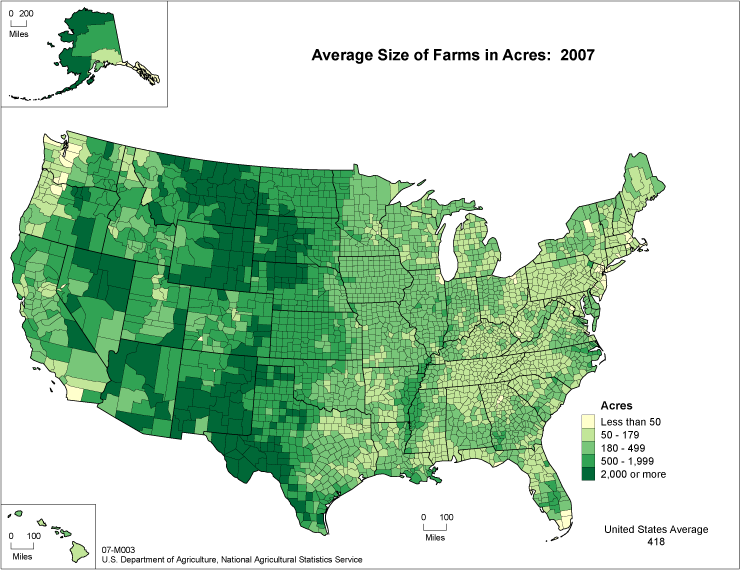Large Farms Associated with Areas of Poor Food Access in the US
* Map above from: Morton, Lois Wright, and Blanchard, Troy C. 2007. Starved for Access: Life in Rural America’s Food Deserts. Rural Realities 1:4, p.3.
An interesting trend within US agriculture is the fact that the parts of the country with the largest farms tend to be the parts of the country lacking convenient access to grocery stores.
It’s certainly true that rural areas have fewer retail stores in general, and therefore less supermarkets.
But this also seems to run counter to the notion that ‘food deserts’ are an inner city problem, closely related to urban poverty and racial inequality.
Is it possible that the rural areas in which large farms are situated tend to be impoverished as well? This would be a stark contrast
to the notion promoted by big agriculture that economies of scale lead to efficiencies, and therefore produce the most
economically sustainable agricultural systems.
Certainly we can’t infer that just because smaller farms tend to be concentrated in more food secure parts of the country, that they
are all thriving economically. But neither is it far-fetched to suggest that these small farms – which tend to grow a diverse mixture of
high value crops, mitigate the risk of catastrophic crop failure, and tend to capture premium prices for the quality and added value of their
produce. In addition, by selling locally they may actually contribute to food security in their communities.
I am curious about what others think the story is here. Please leave comments below or e-mail me at beginningfarmers@gmail.com.





 Your Privacy Choices
Your Privacy Choices
Leave a comment